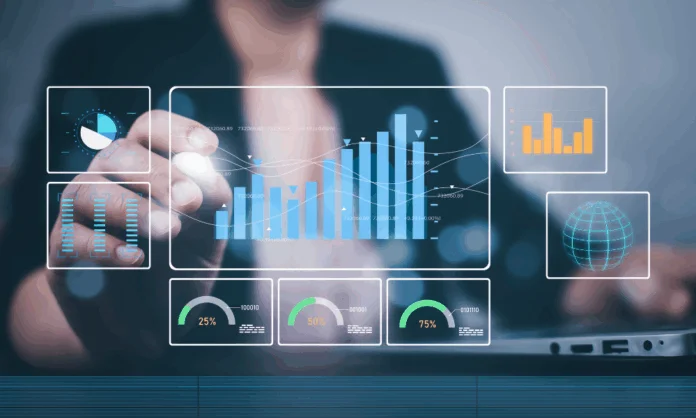Are you staying in the know of a data-driven world? If yes, that’s good! Spatial analytics in business is a fantastic concept that’s a hidden gem, yet it’s extremely helpful. It’s not just about maps, but rather about adding a geographical insight to everyday data. It doesn’t matter if you are going on a long drive or simply checking weather conditions or looking for a restaurant; you’re tapping into the magic of spatial data and location intelligence.
Here in this blog, let us understand more about spatial analytics and how it is changing the scenario of decision-making for businesses. Let’s get through the power of pins on your map.
What is Spatial Analytics in Business?
Spatial analytics is the process of analyzing geographic data to identify and visualize trends, patterns, and relationships within the data. It simply goes beyond traditional data analysis through the “lens of where.”
Spatial data assists businesses in making informed, data-driven decisions, whether they are optimizing delivery routes, building city infrastructure, or more.
Considering a food delivery company that has observed an increase in orders in the last month. Traditional analysis would reflect what occurred, more sales, but not when or why.
Using spatial analytics, the company would notice that the majority of new orders are based on a rapidly expanding residential neighborhood with limited restaurants in it. This understanding enables them to target their marketing efforts in this zone, attract new partner restaurants, and establish quicker delivery routes to better serve their customers.
What is the Importance of Spatial Data?
Spatial data is not just the dots on the map, but the prime contributor behind smarter decisions in the interconnected era. Every item and phenomenon has place-biasedness and accessing that place can open colossal value. For instance, urban planners can eliminate errors by avoiding floods, while companies can optimize their processes and predict trends using spatial insights.
Alongside that, you’re on a hunt at a grocery shop nearby, and you need spatial data behind the scenes to get you to the traffic, share recommendations, and help you get there easily.
Sharing the Top Benefits of Spatial Analytics for Businesses
1. Helps in Intelligent Decision-Making
Adding location data to the analysis would offer context to each decision. Companies can easily acquire information about foot traffic, demographic patterns of customers, or local demand to select the correct locations of the market, and more.
2. Enjoy Competitive Advantage
Another benefit of spatial analytics is that it shows the locations with the highest audience engagement. This can help businesses to maximize their campaigns and locate high potential new markets, alongside gaining a solid competitive advantage.
3. Supremacy of Cost and Efficiency Gains
Spatial analytics reduces costs and boosts productivity by identifying inefficiencies in logistics, supply chains, or store networks. For example, it will eliminate the overlap of stores and allow intelligent planning of delivery routes.
4. More Intelligible Geographic Visualization.
Live maps and dashboards transform complicated data into graphics. Simple geographic filters help businesses to easily identify patterns of performance, customer groupings, or unexploited regions.
5. Better Customer Experience
By understanding where customers interact the most, a brand can tailor experiences and offers. Spatial data leads to closer bonds, both locally in terms of promotions and services and regionally in terms of service optimization.
Types of Businesses Using Spatial Analytics for Intelligent Decision-Making
The spatial analytics field is completely transforming the way industries operate, plan, and serve customers. The following are some businesses that are making better decisions.
Retail and Consumer Goods
Retailers use spatial analytics to identify the most suitable location of the stores, customer demographics, and targeted marketing campaigns. It also helps in inventory management/ by aligning regional demand and identifying market gaps to inform further expansion plans.
Logistics and Transportation
Spatial analytics in logistics can be used to optimize routes, utilize a fleet tracking system, and improve traffic management. Indeed, this will lead to cutting down fuel expenditure, improving delivery schedules, and overall efficiency of the supply chain.
Medical and social services
Spatial information is essential in the detection of disease diffusion, health care, and emergency planning. It is also applied in smarter urban planning, waste management, and optimization of public transport by governments.
Real Estate
Spatial analytics can support developers and investors in valuing a potential site or property, based on foot traffic, neighborhood trends, and changing demographics, making data-driven strategies about real estate become strategic real estate choices.
The Future of Spatial Analytics
The future of spatial analytics in business looks great, and the adoption rate is also increasing at the fastest pace. It has become the cornerstone of decision-making for businesses, as mentioned above. Top tech companies, including AWS, Google Cloud, and more, are already adding spatial data features, making it easy for businesses to focus on location-based insights to engage customers smartly.
Making it to the Last!
Hopefully, the above blog has clarified your understanding of spatial analytics in business and its role in enabling enterprises to make intelligent decisions. Spatial analytics is a practical approach that incorporates a spatial perspective into standard data analysis. It assists companies and organizations in making smarter decisions by showing where things are happening, rather than what is happening.
Spatial Analytics will continue to advance as technology develops, providing more innovative applications and greater use in industries.
Visit us here to check out our high-quality content that can help to boost your knowledge.
FAQs
Q1. How does spatial analysis work?
Ans: Spatial analysis is about finding insights related to location by overlapping layers of geographic and business data into maps.
Q2: Which tools are used for spatial analytics?
Ans: Some of the tools for spatial analytics are: Geographic Information System (GIS), and software like ArcGIS and QGIS.
Read More:
Top 10 Business Analytics Tools You Should Know About
How can Business Benefit from Real-Time Data Analytics?

